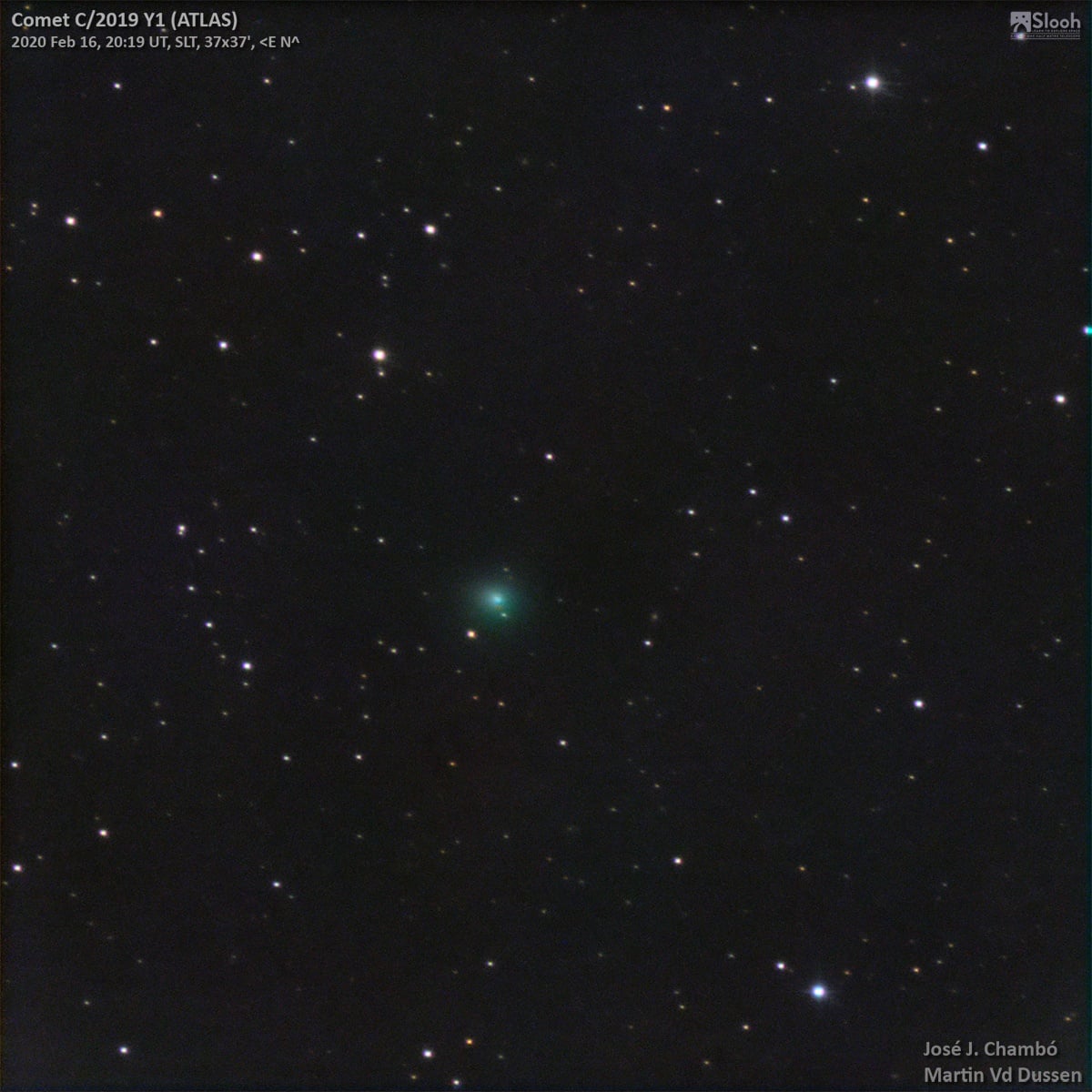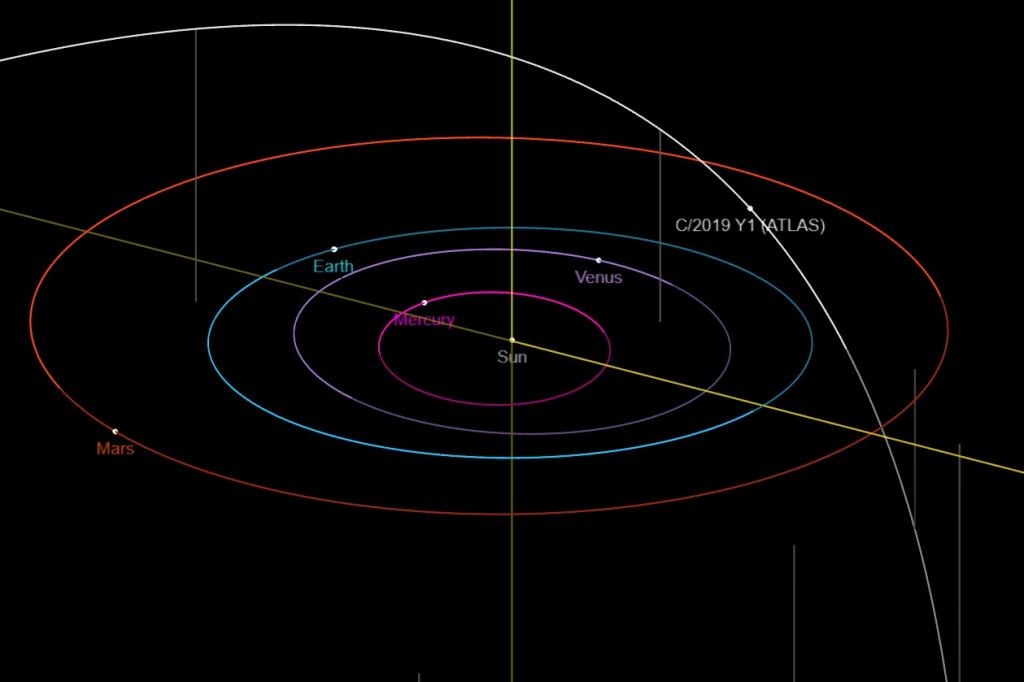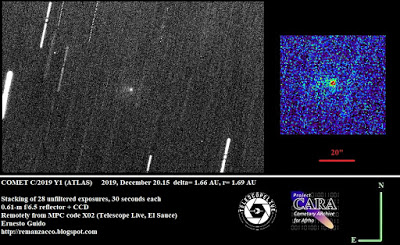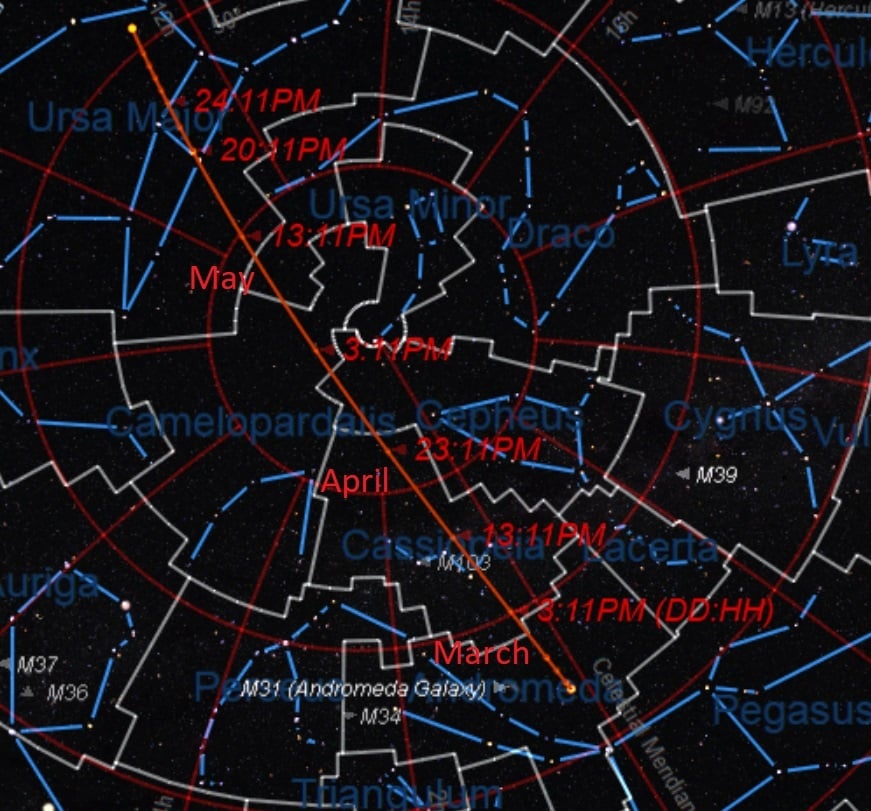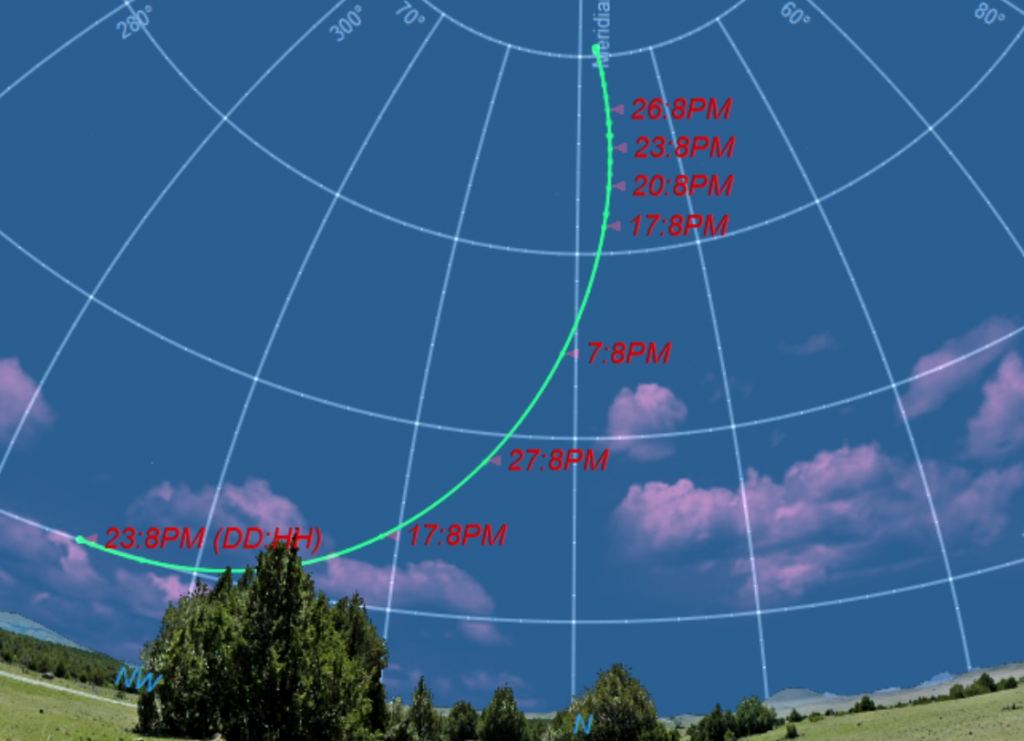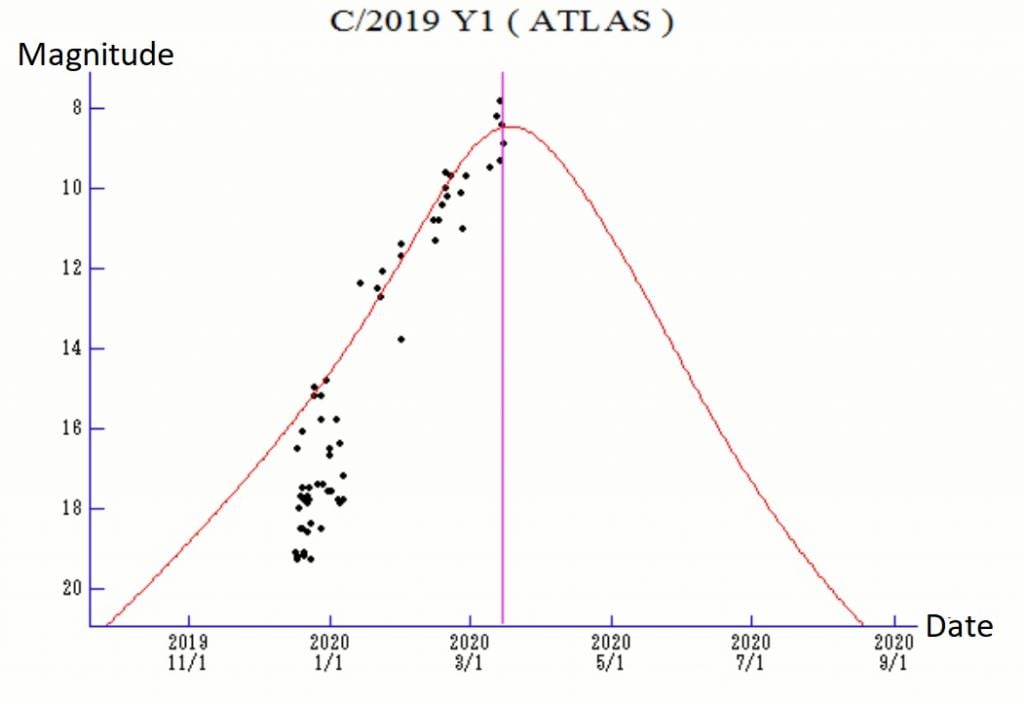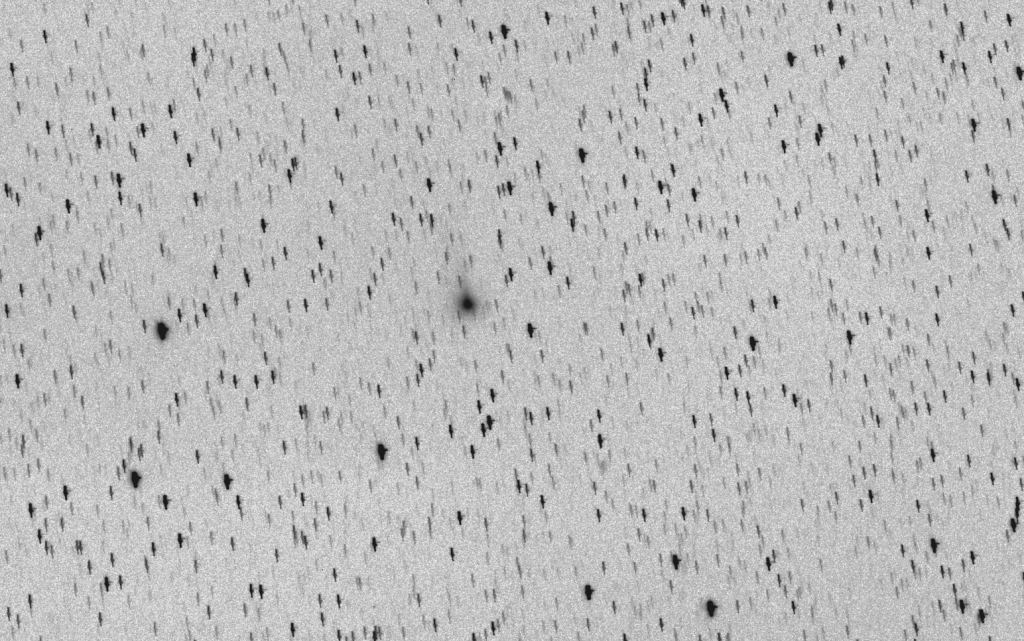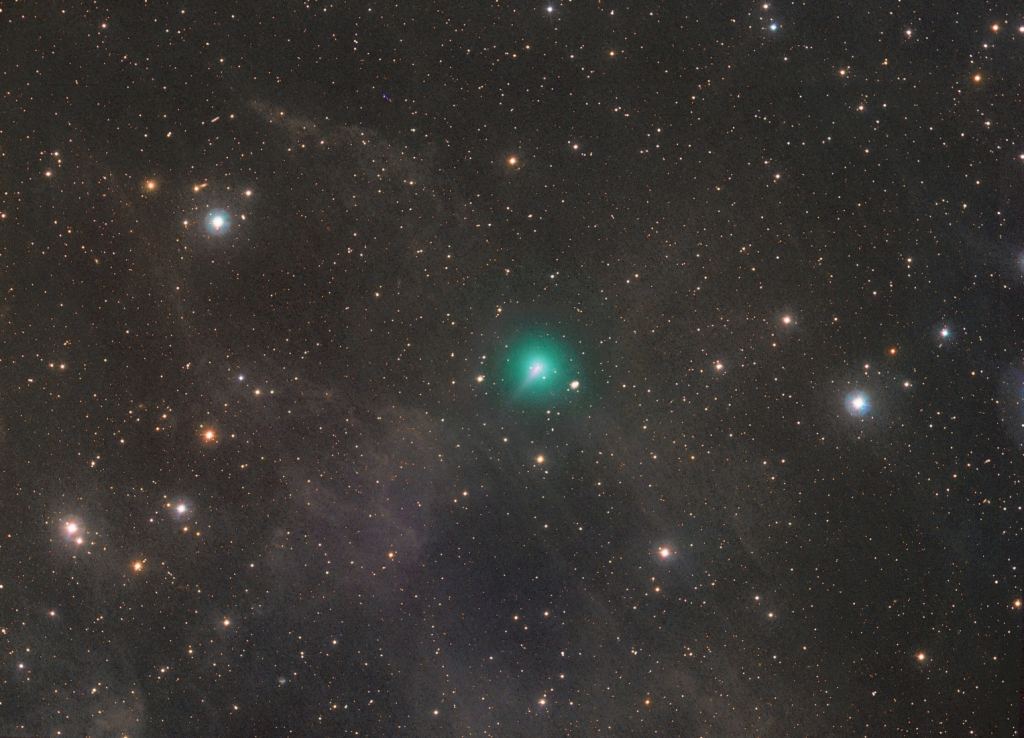Got clear skies? If you're like us, you've been putting the recent pandemic-induced exile to productive use, and got out under the nighttime sky. And though 2020 has yet to offer up a good bright 'Comet of the Century' to keep us entertained, there have been a steady stream of good binocular comets for northern hemisphere viewers, including C/2017 T2 PanSTARRS and C/2019 Y4 ATLAS. This week, I'd like to turn your attention to another good binocular comet that is currently at its peak: the 'other' comet ATLAS, C/2019 Y1 ATLAS.
Discovered by the Asteroid Terrestrial-Last Alert System (ATLAS) based at two geographically separate sites on Haleakala and Mauna Loa, Hawaii on the night of December 16th, 2019, Y1 ATLAS was one of the final comet discoveries of 2019.
The comet is on a 3,500 year path around the Sun on a prograde orbit inclined 73 degrees relative to the ecliptic. When this comet last came through the inner solar system around the 25thcentury BC, the Great Cheops Pyramid of Giza was still fresh from the builders.
Unfortunately, cosmic bad luck sees Comet Y1 ATLAS visiting us at almost exactly the wrong time of year. Had Y1 Atlas crossed the ecliptic in October, it would have passed just 0.08 Astronomical Units (AU) or 7.4 million miles (12 million miles) from the Earth just exterior to our orbit, and would have put on a fine show. As is often the case with comets, six months earlier or later would've made a big difference.
As it stands, Comet Y1 ATLAS just passed perihelion at 0.861 AU (80 million miles/130 million kilometers) from the Sun on March 16th, and currently shines at magnitude +8 in the constellation of Andromeda. March through mid-April sees the comet holding steady about 10 degrees above the northwestern horizon at dusk for mid-northern latitude observers, until it vaults northward towards the north celestial pole, becoming a circumpolar object from late April through May. The comet follows the zero hour line in right ascension right through the end of Spring.
As of writing this, this apparition of the comet seems to be slightly over-performing by about half to a full magnitude or so.
Let's hope that this trend holds. There is also something else that's very special about comet Y4 ATLAS: it's similar orbit suggests that it is a fragment of C/1988 A1 Liller. This may have been the result of a cometary breakup long ago, as C/1996 Q1 Tabur and C/2015 F3 Swan all seem to belong to the same family of objects. This also suggests that Y1 ATLAS is dynamically new, and could produce an outburst of its own.
Here's the blow-by-blow of celestial dates with destiny for comet Y1 ATLAS in the Spring of 2020:
(note: unless otherwise mentioned, "passes near" in the following text means less than one degree).
March
27-Photo op: the comet passes between NGC 7662 (the Blue Snowball planetary nebula, at 9 degrees distant), and M31 (the Andromeda Galaxy) at 5 degrees away.
April
1-Crosses into the constellation of Cassiopeia the Queen.
14-Crosses the galactic equator northward.
26-Crosses into the constellation Cepheus the King.
May
1-Photo-op: Y1 ATLAS groups with two other notable 2020 comets: T2 PanSTARRS (6 degrees distant) and Y4 ATLAS (20 degrees distant).
2-Crosses into Camelopardalis, and passes closest to the North Celestial Pole (NCP) at less than eight degrees.
3-Closest to the Earth at 1.17 AU distant.
9-Crosses into Draco.
13- Crosses into Ursa Major, and passes 3 degrees from M81/M82.
20-Passes near Dubhe (Alpha Ursae Majoris).
24-passes Owl Nebula Messier 97.
June
22-Passes into Coma Berenices.
29-Passes near the open cluster Melotte 111.
As we enter into July, Comet Y1 ATLAS should drop back below binocular visibility to the sub +10thmagnitude range, not to visit the inner solar system again until sometime in the mid-7th millennium AD.
Observing comets with binoculars is as simple as sweeping the suspect field and looking for the fuzzy little 'star' that stubbornly refuses to snap into focus. Keep in mind, an +8thmagnitude comet can appear visually fainter than an +8thmagnitude star, as all those precious photons are 'smeared' out over the comet's apparent surface area.
Also, we've been getting lots of queries on Comet C/2019 Y4 ATLAS as of late. Yes, there is mounting excitement as this over-performing comet heads towards perihelion in late May… already, the dusty coma of the comet is an amazing 720,000 kilometers (450,000 miles) across… and that's while it's still 1.6 AU from the Sun. Claims, however, that it will become "the brightest comet ever witnessed!" need to be met with extreme skepticism. Yes, it may reach 0 magnitude near perihelion on May 31st… but it will also appear 13 degrees from the Sun on that date, and get swamped in the Sun's glare. The best bet is to nab the comet near dawn in early May, before it disappears from view for good.
Hopefully, tracking down these comets will pass the time in exile. We could really use a solar outburst, galactic supernovae courtesy of Betelgeuse, or great naked eye comet right about now… just nothing apocalyptic.
*-Lead image of Comet C/2019 Y1 ATLAS courtesy of José J. Chambó/Slooh*
 Universe Today
Universe Today
